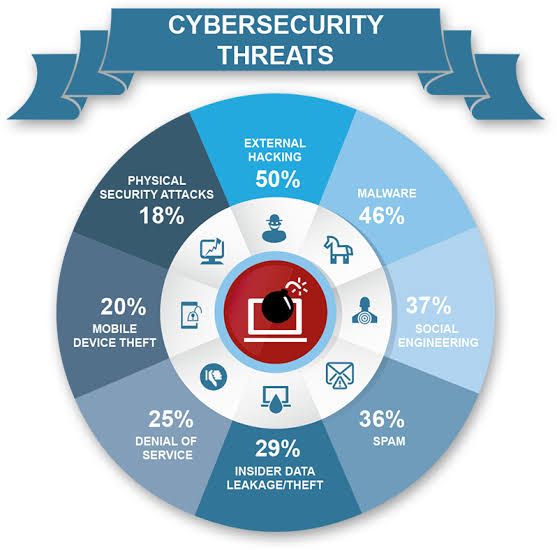Unlocking the Power of Cyber-Physical Systems in Energy
The Convergence of Physical and Cyber Worlds
The integration of physical and computational systems has revolutionized various industries, including energy. The concept of Cyber-Physical Systems (CPS) has become increasingly important in the energy sector, as it enables the convergence of physical and cyber worlds. Energy Cyber-Physical Systems, a subset of CPS, specifically focuses on the interconnection of physical energy systems with advanced computational capabilities and data analysis. This integration has the potential to transform the energy landscape, optimizing energy management, reducing costs, and minimizing environmental impact. The intersection of physical and computational systems in energy CPS enables real-time monitoring, predictive analytics, and optimized energy distribution, creating a more efficient and sustainable energy ecosystem.
How to Leverage CPS for Efficient Energy Management
Energy Cyber-Physical Systems (CPS) have the potential to revolutionize the way we manage energy resources. By integrating physical and computational systems, CPS enables real-time monitoring, optimized energy distribution, and predictive maintenance. This convergence of the physical and cyber worlds allows for more efficient energy management, reducing waste and costs. For instance, CPS can detect anomalies in energy usage patterns, enabling utilities to identify and address energy losses promptly. Additionally, CPS can optimize energy distribution in real-time, reducing peak demand and strain on the grid. With the ability to predict equipment failures and schedule maintenance, CPS can also minimize downtime and extend the lifespan of energy infrastructure.
In practice, energy CPS has been successfully implemented in various settings. For example, smart buildings equipped with CPS can optimize energy consumption based on occupancy rates, time of day, and weather conditions. Similarly, industrial automation systems powered by CPS can optimize energy usage in real-time, reducing energy costs and environmental impact. By leveraging the capabilities of energy CPS, organizations can unlock significant energy savings, reduce their carbon footprint, and improve their bottom line.
The Role of IoT and Big Data in Energy CPS
The integration of the Internet of Things (IoT) and big data analytics is a crucial aspect of Energy Cyber-Physical Systems, enabling real-time monitoring and optimization of energy management. IoT devices can be deployed throughout the energy infrastructure, collecting data on energy usage, power consumption, and other relevant variables. This data is then analyzed using advanced algorithms and machine learning techniques, providing actionable insights that can be used to optimize energy distribution, predict energy demand, and identify potential issues before they occur. For example, IoT sensors can be used to monitor the performance of wind turbines, allowing for predictive maintenance and reducing downtime. Additionally, big data analytics can be applied to energy usage patterns to identify areas of inefficiency and develop targeted strategies for improvement. The application of IoT and big data analytics in Energy Cyber-Physical Systems can lead to significant reductions in energy waste, improved efficiency, and enhanced reliability.
Cybersecurity Threats and Challenges in Energy Cyber-Physical Systems
Cybersecurity is a critical concern in the development and implementation of Energy Cyber-Physical Systems. The convergence of physical and computational systems creates new attack surfaces, making energy CPS vulnerable to various types of cyber threats. These threats can compromise the availability, integrity, and confidentiality of energy CPS, leading to devastating consequences, such as power outages, equipment damage, and financial losses. One of the significant challenges is the lack of standardization in CPS security protocols and communication protocols, making it difficult to implement a unified security strategy. Furthermore, the widespread adoption of IoT devices in energy CPS introduces new vulnerabilities, such as device hijacking, data tampering, and malware infections.
Energy CPS operators and stakeholders must adopt a proactive and multi-layered cybersecurity approach to mitigate these threats. This includes implementing robust access controls, intrusion detection systems, and incident response plans. Conducting regular security audits, penetration testing, and vulnerability assessments is also essential to identify and address potential security risks. Moreover, developing and enforcing cybersecurity standards and guidelines, such as those provided by the National Institute of Standards and Technology (NIST), can help ensure the security and resilience of energy CPS. By prioritizing cybersecurity, energy organizations can protect their Energy Cyber-Physical Systems from cyber threats and ensure the reliable and efficient delivery of energy services to their customers.
Another critical challenge is the lack of cybersecurity awareness and expertise among energy CPS operators and stakeholders. This knowledge gap can lead to inadequate security measures and increased vulnerability to cyber threats. To address this challenge, energy organizations must invest in cybersecurity training and awareness programs for their personnel, focusing on the unique security risks and challenges associated with energy CPS. By developing a culture of cybersecurity awareness and responsibility, energy organizations can reduce the risk of cyber threats and ensure the reliability and resilience of their Energy Cyber-Physical Systems.
In conclusion, cybersecurity is a critical challenge in the development and implementation of Energy Cyber-Physical Systems. Energy organizations must prioritize cybersecurity by adopting a proactive and multi-layered approach, implementing robust security measures, and developing a culture of cybersecurity awareness and responsibility. By doing so, they can protect their energy CPS from cyber threats and ensure the reliable and efficient delivery of energy services to their customers.
The Evolution of Smart Grids and Energy Distribution
The integration of Energy Cyber-Physical Systems (ECPS) is transforming the way energy is generated, distributed, and consumed. One key application of ECPS is in the development of smart grids, which leverage advanced technologies to create more resilient, flexible, and efficient energy distribution systems. By combining physical infrastructure with computational systems and real-time data analytics, smart grids can optimize energy distribution, predict energy demand, and enable the integration of renewable energy sources. For example, ECPS can analyze real-time data from smart meters and sensors to detect energy spikes, adjust energy distribution accordingly, and prevent power outages. This enables utilities to provide more reliable and efficient energy services, reducing energy waste and improving overall system performance.
The use of ECPS in smart grids also enables the development of microgrids and decentralized energy distribution systems. Microgrids are local energy systems that can operate in isolation from the main grid, providing backup power during outages and improving energy resilience. By integrating ECPS with microgrids, utilities can create more flexible and adaptable energy systems that can respond to changing energy demand and supply conditions. For instance, ECPS can analyze real-time data from microgrids and adjust energy distribution to optimize energy efficiency and minimize waste. This enables the integration of local renewable energy sources, such as solar and wind power, and reduces reliance on fossil fuels.
The evolution of smart grids and energy distribution is also driven by the need for increased energy security and reliability. ECPS can analyze real-time data from energy systems to detect potential security threats, such as cyber attacks and physical tampering. By integrating ECPS with advanced security protocols and monitoring systems, utilities can create more secure and resilient energy systems that can detect and respond to security threats in real-time. This enables the development of more robust and reliable energy systems that can withstand physical and cyber-based threats.
Case Studies: Real-World Applications of Energy Cyber-Physical Systems
Several real-world applications of Energy Cyber-Physical Systems (CPS) have demonstrated significant improvements in efficiency, reliability, and sustainability. One notable example is the smart building management system implemented by the New York City-based company, BuildingIQ. This system utilizes Energy CPS to optimize energy consumption, reduce energy waste, and enhance overall energy efficiency. By integrating advanced sensors, IoT devices, and data analytics, the system can monitor and control various building systems, including HVAC, lighting, and security. As a result, building owners have reported a significant reduction in energy costs and carbon footprint. The success of this Energy CPS implementation highlights the potential for widespread adoption in the commercial and industrial sectors.
Another notable example of Energy CPS in action is the Siemens’ Wind Parks CPS, a large-scale implementation of Energy CPS in the wind energy sector. This system integrates IoT sensors, data analytics, and advanced control systems to optimize wind turbine performance, reduce maintenance costs, and increase energy production. By leveraging Energy CPS, Siemens has achieved significant gains in efficiency, reliability, and sustainability, making it a model for the wind energy industry.
Industries that rely heavily on automation, such as manufacturing and oil and gas, are also leveraging Energy CPS to optimize operations and improve energy efficiency. For instance, the implementation of Energy CPS in manufacturing facilities has enabled real-time monitoring and control of energy-intensive processes, resulting in significant reductions in energy consumption and waste. Similarly, oil and gas companies are using Energy CPS to optimize drilling and production processes, leading to improved energy efficiency and reduced environmental impact.
Renewable energy systems, such as solar and hydro power, are also benefiting from the application of Energy CPS. By integrating advanced sensors, data analytics, and control systems, Energy CPS can optimize energy production, reduce waste, and improve grid integration. For example, a recent study on solar power systems found that the implementation of Energy CPS led to a 15% increase in energy production and a 20% reduction in maintenance costs.
These case studies highlight the potential of Energy CPS to transform the energy sector by improving efficiency, reducing waste, and promoting sustainability. As the adoption of Energy CPS continues to grow, it is essential for stakeholders to explore its applications and implications, ensuring a widespread understanding of its benefits and challenges.
The Future of Energy Cyber-Physical Systems: Trends and Opportunities
The rapidly evolving landscape of Energy Cyber-Physical Systems (ECPS) is expected to transform the energy sector in the coming years. Advances in technologies such as artificial intelligence (AI), blockchain, and edge computing are poised to significantly enhance the capabilities of ECPS. The convergence of physical and cyber worlds will continue to shape the energy sector, with innovations in smart grids, microgrids, and decentralized energy distribution systems. As ECPS integrate with emerging technologies, their ability to optimize energy efficiency, reduce costs, and improve reliability will become even more pronounced.
Edge computing, for instance, will play a vital role in the widespread adoption of IoT devices in the energy sector, enabling real-time data processing and analysis. This will facilitate more efficient energy distribution and predictive maintenance, allowing utilities to respond to changing energy demand in real-time. Furthermore, the implementation of blockchain technology in Energy Cyber-Physical Systems will enhance the security and transparency of energy transactions, enabling peer-to-peer energy trading and further decentralizing the energy grid.
Another key area of development is the integration of ECPS with smart buildings and cities. By leveraging the capabilities of Energy Cyber-Physical Systems, buildings and cities can optimize their energy usage, reduce waste, and create a more sustainable environment. This convergence will also create new opportunities for energy harvesting, storage, and distribution, further increasing the efficiency and resilience of the energy infrastructure.
In addition, the growing importance of renewable energy sources will drive the development of advanced Energy Cyber-Physical Systems. As the share of renewable energy in the global energy mix continues to grow, ECPS will play a critical role in ensuring a stable and reliable energy supply. This will involve the development of advanced predictive analytics, real-time monitoring, and optimized energy storage solutions.
Moreover, the increasing focus on cybersecurity will lead to a more robust and secure Energy Cyber-Physical Systems infrastructure. Utilities and energy companies will prioritize the development of advanced threat detection and mitigation strategies, ensuring the protection of the energy grid from evolving cyber threats.
Overall, the future of Energy Cyber-Physical Systems holds significant promise for the energy sector. As these systems continue to evolve, they will unlock new opportunities for innovation, growth, and sustainability, creating a more efficient, reliable, and resilient energy infrastructure for the future.
Implementing Energy Cyber-Physical Systems: A Roadmap for Success
Implementing Energy Cyber-Physical Systems effectively requires a strategic and multi-disciplinary approach, bringing together diverse stakeholders and expertise. By understanding the complexities and potential benefits, organizations can develop a tailored roadmap for successful implementation. This methodology involves identifying specific energy management challenges, defining relevant CPS technologies and applications, and integrating these into existing infrastructure.
The first step involves conducting a thorough assessment of the current energy management system, identifying inefficiencies, and mapping out energy usage and waste patterns. This analysis provides a solid foundation for defining the scope and requirements of the desired Energy Cyber-Physical System. Key stakeholders, including IT, operational, and maintenance teams, should be involved in this process to ensure an integrated and feasible solution.
Based on this assessment, the next step is to evaluate and select suitable Energy Cyber-Physical Systems technologies and applications that address the identified challenges. This might include IoT sensors and devices, data analytics platforms, advanced control systems, or predictive maintenance tools. Stakeholders should carefully consider the technical, financial, and operational implications of these technologies to ensure they meet the specific needs of the organization.
To facilitate a seamless integration of the Energy Cyber-Physical System, a phased implementation plan should be developed, encompassing pilot projects, incremental rollout, and continuous evaluation. This helps mitigate potential risks, assess the effectiveness of the new system, and make adjustments as needed.
By adopting this structured approach, organizations can navigate the complexities of implementing Energy Cyber-Physical Systems and unlock significant benefits, such as increased energy efficiency, improved reliability, and reduced operational costs. Collaboration, strategic planning, and ongoing evaluation will be critical in ensuring the long-term success of the Energy Cyber-Physical System implementation and its positive impact on the organization’s sustainability goals.
In addressing the challenges and opportunities associated with implementing Energy Cyber-Physical Systems, organizations can contribute to a more sustainable, efficient, and resilient energy future. As the demand for energy continues to evolve, Energy Cyber-Physical Systems will play a vital role in driving this transformation, fostering innovation, and advancing the integration of digital and physical systems.



